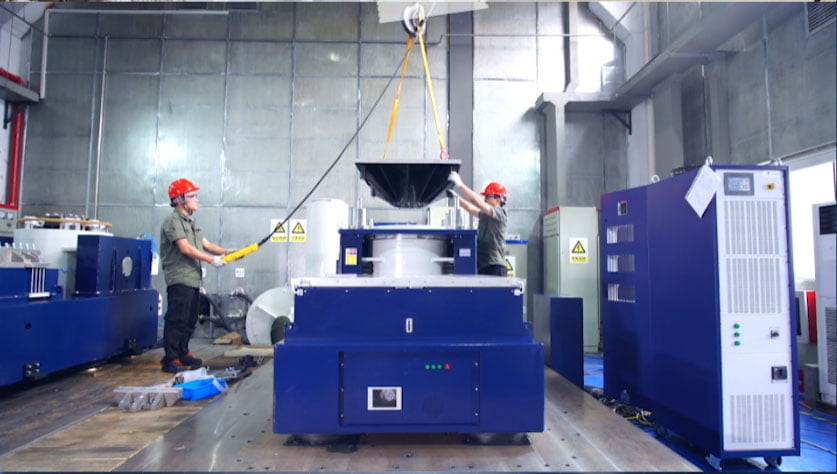Vibration test rig play a key role in many industries, ensuring the reliability of products under actual conditions of use. Maintaining these test systems is critical not only to extend their service life, but also to ensure the accuracy of test results.
This article provides you with some simple insights on how to properly maintain a vibration test rig and how to troubleshoot and resolve common problems.
Regular visual inspection of the vibration test machine to ensure that its components, cables and connections are in solid and stable condition is a key step in routine maintenance.
Check power cord wear, check control Settings and software functions, oil and water supply, and lubricate moving parts if necessary.
Calibrate vibration levels to ensure accuracy, check cooling systems for dust and debris, and check rubber seats and isolation pads.
Replace worn parts such as bearings and springs, verify the alignment balance of the shaker, and check the owner’s manual for specific recommendations.
Regularly update the firmware version of the vibration test machine for the latest functional optimizations and performance improvements, while using updated software tools for calibration and data analysis to ensure the compatibility of the vibration test rig and the accuracy of test results.
Equipment and all surrounding areas should be kept as clean as possible. Keep the vibration test machine clean at all times, as debris can damage the top seal and, if sucked into the vibrator, cause an electrical short circuit that can damage the vibrator.
If the vibration test machine working environment is dirty, it is easy to lead to blockage of the vent, affecting the cooling effect of the vibrator. This can cause the vibrator to overheat and affect its service life. Therefore, it is necessary to clean the vibration test rig surface and vents regularly to maintain good heat dissipation conditions.
When the vibration test rig is operating in a high temperature environment above 30 ° C, its coil will easily overheat under full strength load. The higher the ambient temperature, the shorter the use time of the vibrator. If the ambient temperature cannot be controlled below 30 ° C, it is necessary to reduce the rated power of the vibrator accordingly to avoid overheating damage.
The compressed air supplied to the vibration test machine should meet the ISO 8573-1: 1.7.1 standard, that is, the maximum particle size does not exceed 0.01 micron, and the residual oil content does not exceed 0.01 ppm. If necessary, water or oil separators can be installed to ensure air cleanliness.
Especially in the case that the air compressor may be shut down at night, it is recommended to install a safety switch device. This ensures that the shaker cannot start running without a supply of compressed air, avoiding overheating damage due to lack of cooling air.
Hose length should be as short as possible. If it is considered that the hose length provided by the standard is too short, our engineering team should be consulted on the requirements for long pipe lengths. It is worth noting that the long pipe increases the pressure drop of the fan, which limits the flow of air to the vibrator. Bent or damaged cooling hoses cause less air to flow into the vibrator, resulting in higher operating temperatures and shorter vibrator life.
Because the fuselage will gradually heat up, standard water-cooled shaker are not suitable for long-term continuous operation. Continuous operation can cause the machine to overheat, affecting performance and service life. To solve this problem,JOEO offers an optional body cooling feature. The vibrator with this design is capable of continuous and stable operation without problems due to increased fuselage temperatures.
The raw water flow and temperature supplied to the cooling device must strictly meet the specifications. Failure to keep these parameters within the proper range will cause the system to overheat and trip, because the cooling coils cannot completely expel heat.
The cooling tank must be kept full at all times. If the water tank level is too low, it will damage the vibrator and its cooling device. This is because there is not enough cooling water to effectively dissipate heat.
When the cooling device is installed above the vibration test rig, it is necessary to consider the reflux process under the gravity of the cooling water and the lubricating oil. Proper piping arrangement and flow direction must be ensured to ensure smooth return of water and oil from the vibrator to the cooling unit.
Conversely, if the cooling unit is installed below the vibrator, measures need to be taken to ensure that the water and oil can be pumped back to the upper cooling unit. This may require the addition of equipment such as return pumps to ensure proper functioning of the circulation system.
